Adrian Collins's Blog, page 193
December 10, 2020
An Interview with C.S. Friedman
Speculative fiction author C.S. Friedman has released a sequel to her cyberpunk hit This Alien Shore, a New York Times Notable Book of the Year in 1998. The new novel titled This Virtual Night follows unlikely allies Ru Gaya, a risk-loving mercenary explorer, and Micah Bello, brilliant VR game designer, as they follow the trail of an unknown entity with the power to technologically alter human perception: a power that could cause the collapse of civilization as they know it. The third installment of the Outworlds series (no release date yet) is tentatively titled This Variant Tide. Friedman is also known for her popular Coldfire series.
I had the pleasure of interviewing her about the implications of virtual reality, the power of mega-corporations, her experience as a woman in the science fiction/fantasy world, and the writing process.
What inspired you to publish this sequel now, over 20 years after This Alien Shore was published?
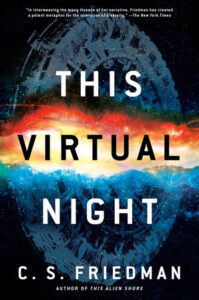 TAS is my most popular SF work, and It’s the only thing I’ve written that was specifically designed to support more than one novel. The universe of TAS has almost limitless potential for exploring alien settings and testing the nature of humanity, the two things that make SF exciting for me. It had been a while since I had written a SF novel, so when I decided it was time to do so again, a return to the Outworlds seemed the logical choice.
TAS is my most popular SF work, and It’s the only thing I’ve written that was specifically designed to support more than one novel. The universe of TAS has almost limitless potential for exploring alien settings and testing the nature of humanity, the two things that make SF exciting for me. It had been a while since I had written a SF novel, so when I decided it was time to do so again, a return to the Outworlds seemed the logical choice.
What would you say are the main themes for This Virtual Night?
I have to smile when you ask that, because despite the best efforts of high school teachers to explain the importance of “theme”, I don’t think I really understood why it mattered until I started writing.
Cyberpunk introduced the concept of human minds plugged directly into a data network, but rarely explored how that would impact the human soul. That is the primary theme of the entire series, and I intend to explore one aspect of it in each book. In TAS, I asked what a computer virus might become, in a world where it could invade and alter human minds. TVN asks where the line between reality and virtual reality can drawn—and should be drawn–when the latter is fed directly into the human brain. Every new technology brings with it new challenges to the human spirit, and sometimes threats humans did not anticipate; SF allows us to explore what those might be.
On the Gueran front, TAS presented a society whose raison d’etre was the accommodation of human cognitive diversity. Well, is there a condition which might not fit in, even there? Which would prove so problematic that Gueran society must provide special strategies to deal with it? Ru’s risk-seeking compulsion threatens the welfare of others, and so cannot simply be tolerated. How then can it be channeled, in a way that is true to the Gueran ideal? And how does that reflect upon real-world history, in particular the actions of ancient explorers?
Racism is a major theme of the series, even more timely now than when the first book was written. The physical differences between Variants are dramatic and undeniable, and the refusal of the Terrans to accept Variants as humans echoes the intolerance in Earth’s history, as does the fear at its root. TVN gives us a closer look at the relationship between Terrans and Variants, and how racial stresses have impacted their development.
Both books deal with the thin line between sophisticated learning programs and actual consciousness. Where does life begin? If a computer program acts like a living creature, how must we deal with it?
Given the prevalence of augmented reality and virtual reality in both your novels, how do you feel about the real-world advancements in this technology? How has your perception of AR and VR changed since you released the original book? Do these continuing developments excite you, or frighten you?
I think it’s clear in my books that advancements in virtual technology should be both exciting and frightening. This reflects the Frankenstein motif that has been part of SF since Mary Shelly launched the genre: the more miraculous science becomes, the more likely it is to go wrong in some way we did not foresee. VR could easily become drug-like in its capacity for addiction: when you can make reality look like whatever you want, why bother with the real thing? Already we are seeing teens who prefer interaction on social media to real human contact. As a SF writer, it is my job to explore how such advances might affect us.
Scientists are now experimenting with “headsets” of contacts that can sense subtle currents of electromagnetism within the brain. By learning to control those currents, one can use the headset to control a computer. Let me tell you, it is both humbling and thrilling to realize that a technology you wrote about 20 years ago is now coming into existence. The only real difference is that I used visualization to control neural output, because vision maps so neatly onto the brain. So instead of “learn to activate this portion of your brain,” the instruction would be “visualize a circle”. Science will catch up with me eventually. Another recent experiment mapped activity in the visual cortex and tried to derive an image from it, with promising results. So maybe in the end, science will travel the path I envisioned.
Both books in the series seem to have some clear anti-capitalist/corporation sentiments. With such a long break between the two books, was there a particular reason you felt like now was the time to return to these themes?
I disagree with you about the anti-capitalist message. There is certainly a warning about the power of mega-corporations, and how that power might be abused. And how timely an issue that is now, with the current investigation into the behavior of our tech giants! Such companies have moved off-planet in my book, building themselves mini-worlds in which they answer to no one. Even in the Outworlds they refuse to surrender their autonomy, creating technological fiefdoms that war with each other like barbarian kingdoms. But telling the tale of how vast riches and technological monopolies have created a group of corrupt, power-hungry entities is not the same as saying “Capitalism is bad.” The most successful economies on earth combine capitalist and socialist elements, and so does the economy of the Common Law worlds, as is evident in TVN.
Never assume that the qualities inherent in a “bad guy” are intended as a political statement. Sometimes a story is just a story.
Though I definitely have a bone to pick with advertising practices. That one I’ll own.
What came first for you for This Virtual Night: the plot, setting, or the characters?
Characters and theme came first in this series. Who are my main characters? What technology am I going to explore? How will that technology pose a danger to humanity? As the character of Micah took shape, I started thinking about what types of events he would be handle better because of his experience in designing games. That helped me shape the setting and the plot.
I did know from day one that I wanted part of the book to be set in an interstellar version of Nassau during the pirate era. Just because that would be so much fun to write. The place where outlaws come to spend their money and let off steam.
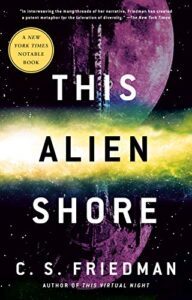 This Alien Shore
seems to explore a variety of neurodivergent POV characters, while This Virtual Night felt less focused on this subject. Why?
This Alien Shore
seems to explore a variety of neurodivergent POV characters, while This Virtual Night felt less focused on this subject. Why?
Well, I don’t like to repeat myself. TAS introduced us to Gueran society. By TVN, that society is part of the established setting. I want each book to be full of new ideas and unique stories. Too much of a focus on that one theme risks a “been-there-done-that” feeling.
Ru’s Variation drives much of the story, but because she goes from one dangerous situation to another, it’s not a noticeable effect.
What part of the book did you have the hardest time writing, and how did you work through it?
The ending, because so many different elements had to come together with perfect timing. I spent a lot of time chatting with a specialist in high tech weapons (he’s mentioned in the acknowledgements) to make sure the part which relied upon that element was as faithful to real science as it could be. Unfortunately, I can’t talk more about that without spoiling some surprises, so let’s just say…it was a challenge.
Tell me about which character was most challenging to write.
Probably Ivar. He was a pretty simple concept when I started out—a stranded lowlife with no interest in anyone’s welfare but his own—but as the story developed I realized it would benefit from him playing a larger role. That brought with it a new narrative challenge, namely the fact that no one in their right mind would trust him, or any information he supplied. So I had to redesign the character a bit, as well as the world he came from, to make it all work. Micah and Ru still don’t trust him worth a damn, but are willing to risk a brief alliance of purpose on the off chance it will get them where they need to go.
In past interviews, you mention knowing little about computers. Does this still hold true? How does this impact your research for sci-fi, and for this book in particular?
Well, I know more than I did 20 years ago, lol. But I still rely heavily upon more knowledgeable people to help me realize my vision, and to make sure my jargon sounds right. I have an ex-hacker among my betas who helps me a lot. I’m also active on Quora, a question-answer site, and often there are questions like, “What sorts of things do science fiction writers often get wrong?” The number one computer-related complaint is that hacking is treated like magic. Often on TV and in movies we see a hacker announce that the file he needs has a password, then reams of numbers scroll across the screen and he concentrates VERY hard, and voila! He’s in! Not only is that unrealistic from a practical standpoint, but password acquisition is often not done on computers at all, but through “social engineering”—tricking people into giving you the information you need. I couldn’t resist poking fun at the Hollywood cliché:
As soon as they were through Ru turned back to find the control panel on that side, and as Micah leaned against the wall, trying to catch his breath, she shut the door again. “Can you lock it?” she asked. “So it can’t be opened from the other side?“
“I can try.” He pushed himself away from the wall and took her place in front of the panel. It took little effort for him to access the hatch’s settings, but altering them turned out to be a whole other challenge. “It needs an administrative code, “ he muttered. “Which I don’t have.”
“Can you hack it?”
He looked at her. “You’re joking, right?”
And later:
There was silence for a moment. Finally Roz said, “Does anyone have a copy of Harmony’s administrative codes? ‘Cause right now the whole station is on holiday, which means there’s no office that we can scam to get them.”
It’s my hope that by working closely with people who have the knowledge I lack, I can weave a good enough story that those who do have such knowledge will enjoy it.
Can you tell us anything about your plans for future novels set in this universe? You mention in another interview that the main characters from This Virtual Night will appear again. Will we ever see characters (or easter eggs) from This Alien Shore again?
I’ll answer the second part first. No, I have no plans to revisit those characters. Their story ended the way I wanted it to, and I like to leave my reader wondering what would come next for them. However, as I wrote This Virtual Night, I found myself enjoying the relationship between my main characters so much, I wanted to feature them in at least one more book. And I think they have the potential to be the focal point for some interesting adventures. So they were written with that in mind.
My next book is tentatively titled This Variant Tide. It will feature a murder mystery that leads Micah and Ru into the world of the moddies–people who have their brainware altered illegally. The relationship between bodily alteration and identity will be explored–another very timely theme–and the Guerans’ tolerance for mental diversity will be tested. My editor tells me the antagonist for that book is one of the darkest concepts she has ever seen in the genre. I’m very excited about the project and think it will be great third installment in the Outworlds saga.
What originally attracted you to the science fiction/fantasy genre?
When I was 12 years old, my family travelled to Europe. Our last stop was Paris, and we were exhausted. It was also the middle of a brutal heat wave, so my parents decided we would take the day off from sightseeing and just relax for a day. I was a compulsive reader in my youth, and since I had no book with me I headed down to Le Drugstore to see what I could find in English. The only book that looked interesting was a collection of short stories by someone named Isaac Asimov, Earth is Room Enough. Reading those stories, I realized that science fiction was the ultimate form of literature in the universe.
Why? Because it is a literature of ideas. Because it explores the question of what makes us human, as no other genre does. Because it stimulates the brain to wonder about distant worlds and possible technologies, all while delivering a story that possesses the classic elements of a great narrative. Science fiction allows us to step outside of our world—outside of ourselves—and thus gain a new perspective on both.
You started your career with a gender-neutral name. In a blog post from a few years ago, you mentioned that if you were starting out today, you’d probably use your full name. Can you speak to your experiences as a woman author in the often-male-dominated SFF world? What advice would you give to female writers?
When I started writing, the majority of SF readers were males, as were the writers. Many readers believed that women could not write “real science fiction”, and some males would not purchase a SF book by a female writer. So many female writers in that time period went by their initials, and a couple used male pen names. One DAW writer used two pen names: a female one, to write science fiction focused on social elements, and a male one, to write rock-em sock-em military SF.
My first book had strong male and female protagonists, and elements that would appeal to both genders, so we felt that in using my initials would remove my sex from the marketing equation, and allow my books to speak for themselves. In fact, my editor and I decided to run an experiment, and not reveal my gender at all. We were curious as to what sex readers would guess I was, just based on my writing style. All the early marketing materials avoided the use of pronouns, so that there were no clues.
And the results? Roughly 50-50, with readers tending slightly more toward believing I was female, and marketing folks tending slightly toward male. I was very proud of that. I was proud that when male readers found out I was a woman, they often asked me how I knew so much about the way men thought. (“I ask them” was the answer). A good writer should be able to write characters of either gender without imposing their own experience upon them.
My advice for women is the same as for men. A good book has strong characters, interesting themes, and compelling action. Make sure your work has all three, and both men and women will enjoy reading it.
What risks have you taken with your writing that have paid off?
Writing books in different styles and subjects, rather than returning to the same world again and again. It’s much easier to make money writing series. In that sense, I can’t say my decision “paid off.” But my career has been much more satisfying for me this way, and I grew much more as a writer than if I had limited myself to one universe from the start.
You used to work as a professional costume designer. How does that experience influence how you develop your novels?
Actually, I am so conscious of how my interest in the field might skew my writing that I sometimes under-describe clothing, to compensate. In the beginning my editor was constantly asking me to flesh out my descriptions. That said, my first novel featured a society obsessed with how they presented themselves to others, and clothing was a key part of that.
Was there any media that particularly influenced the aesthetic of this series?
Nope.
What are some of your recent must-read titles in science fiction and fantasy (last 5 years)?
I’m a bad one to ask, as I’m just coming out of a period when I didn’t write or read much. I have a lot to catch up on.
What are some trends in your genre that excite you?
Space opera is becoming popular again, which is great, because that is what I enjoy writing.
What question do you wish you would get asked in interviews, and what’s the answer?
I think you’ve covered it all here
December 9, 2020
REVIEW: A Fool’s Hope by Mike Shackle
I received a review copy of A Fool’s Hope in exchange for an honest review. Thank you to Mike Shackle and Gollancz.
A Fool’s Hope picks up events about a minute after the conclusion of We Are the Dead. Tinnstra and four-year-old Queen Zorique are on the deck of a ship in the Golden Channel seeking to escape to the shores of Meigore. Having been wracked with fear, with death and destruction seeming to follow the pair, they are at last hoping to receive refuge with Zorique’s uncle – the King of Meigore. Upon arrival, they are pinning their hopes on persuading the monarch to join the Jians in the war that they seem to be losing against the Egril. In A Fool’s Hope, the respite for these ladies doesn’t last long at all. In Shackle’s well-imagined and gritty dark fantasy world, things don’t go to plan very often.
 In the aftermath of the intense warfare fought throughout the city of Kiyosun, we rejoin young revolutionary Dren and former Shulka commander Jax. Both were tortured brutally by the Egril in the Council House and the war has had dramatic effects on them. The duo, who previously despised each other, are still trying to play their part to aid the resistance, but the conflict really is taking its toll on them. Physically and mentally respectively. In a similar fashion, Yas has changed greatly since the Egril invaded, still cares intently for her mother and son, and is dealing with the consequences of her actions from We Are the Dead. She is trying to survive and also assist in the war effort, albeit reluctantly with the latter initially.
In the aftermath of the intense warfare fought throughout the city of Kiyosun, we rejoin young revolutionary Dren and former Shulka commander Jax. Both were tortured brutally by the Egril in the Council House and the war has had dramatic effects on them. The duo, who previously despised each other, are still trying to play their part to aid the resistance, but the conflict really is taking its toll on them. Physically and mentally respectively. In a similar fashion, Yas has changed greatly since the Egril invaded, still cares intently for her mother and son, and is dealing with the consequences of her actions from We Are the Dead. She is trying to survive and also assist in the war effort, albeit reluctantly with the latter initially.
There are four new point of view perspectives that join the narrative in addition to those mentioned above. Two are viewpoints from the enemies, the Egril. Those of new recruit “acorn” soldier, Mateon and of Francin, a high ranking Chosen of Kage who has some very unique skills. These two new players were fine characters giving extra insight into the Egril’s war effort. We see much more through these two characters’ eyes about the Egril’s conquests than we did through torturer Darus’ in We Are the Dead. Another perspective that I enjoyed following was that of the honourable and respected Meigorian sea captain Ralasis, who may or may not have a slight crush on Tinnstra. The final point of view I won’t go into much detail about, however much I’d like to, as it does approach spoiler territory. However, later in the novel when we start following them is a pleasant surprise, seems fitting, and really adds to the experience and drama of A Fool’s Hope‘s final third.
The point of view perspectives give a grand overview of the full happenings of the conflict. I enjoyed that I felt that I was getting to witness the whole picture. Some of the characters I had issues with at the beginning of the first book, I no longer have any qualms with at all. Dren’s character arc is particularly impressive to say how much of a bugbear I had with him during the first sections of We Are the Dead. One of my other minor pet peeves from the previous book was the number of times a chapter or section ended with the world exploding or, …and then everything went black. That still happens here but it didn’t gripe me whilst reading. Either I’ve gotten mellower in the last eighteen months or, in A Fool’s Hope, Shackle injects these moments less frequently and more deftly.
If Shackle was just finding his voice as an author in We Are the Dead, he has really excelled and polished his craft in the sequel. A Fool’s Hope knows precisely what sort of beast it wants to be from the very beginning and it doesn’t disappoint fans of The Last War who have been looking forward to this novel. The action and drama predominantly takes place in Kiyosun and Meigore, but we see brief yet important glimpses of other places in this crafted fantasy world such as Kagestan and Aisair.
If I had to describe A Fool’s Hope and this series in three words they would simply be War. Action. Drama. If I had to add a bit more detail then I’d go with: A Fool’s Hope is gritty, thrilling, with well-crafted and surprisingly likeable characters (for the most part), and it progresses the overall narrative in fine fashion. The endings are really well presented and have intrigued me greatly to see what will follow next. The Last War is a series that many more fans of grimdark and dark fantasy should check out and I’m glad that I’ve been following Shackle’s work since day one. 9/10.
Read A Fool’s Hope by Mike Shackle
The post REVIEW: A Fool’s Hope by Mike Shackle appeared first on Grimdark Magazine.
December 8, 2020
Catching up with grimdark fantasy champion Michael R. Fletcher
Our man in the trenches Tom Smith gets into the darkest side of fantasy, catching up with Beyond Redemption author and champion of grimdark fantasy, Michael R. Fletcher. We chat about his writing process and inspirations, Irish whiskey and the Hemmingway approach, as well as the impact and use of music in his process. Finally, a few interesting tid bits on what’s coming in 2021 from one of our favourite authors.
You’ll know Fletcher from pretty much every major project we’ve had (Evil is a Matter of Perspective, and various GdM issues) or have in development (In the Shadow of their Dying and The King Must Fall). Needless to say, we’re big fans and love a good chin wag with him.
A special mention goes out to Graeme Morgan from Odd Robot Design who helped not only save me with the development of this video (as you all likely know by now, I have a penchant for breaking tech things), but also with the Steven Erikson video.
The post Catching up with grimdark fantasy champion Michael R. Fletcher appeared first on Grimdark Magazine.
REVIEW: Memoria by Kristyn Merbeth
Memoria, Kristyn Merbeth’s second book of the Nova Protocol series, is another fun dive into the world of the dysfunctional Kaiser family. In the first novel, Fortuna, Kristyn Merbeth introduced us to the Kaiser family led by the reincarnation of Momma Fratelli from Goonies as the Momma. Momma reigned over her brood of thieves, swindlers, and smugglers with an iron fist. She was sparing of praise and love, no more so than with Scorpia Kaiser. In the first novel, Scorpia is the pilot of the family ship, Fortuna. She suffers from Middle child syndrome, where she feels not as good as her older and disappeared brother Corvus, nor does she get a pass on her actions like her younger siblings do. She spends a good part of the first novel drinking her problems away.
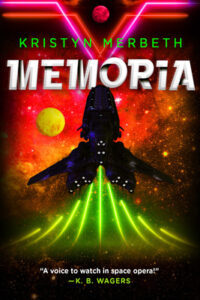 Corvus, on the other hand, was newly returned from the war in the first book. He left, against Momma’s wishes, breaking cardinal family rules by disobeying her. The dynamics between the Kaiser family’s siblings told through Scorpia and Corvus’s eyes is spectacularly chaotic but changes as they grow, learn, and come into their own. Memoria, the second book of the Nova Vita Protocol series, is releasing this month. It is a continuation of the drama from the first book, again told through Scorpia and Corvus’s eyes.
Corvus, on the other hand, was newly returned from the war in the first book. He left, against Momma’s wishes, breaking cardinal family rules by disobeying her. The dynamics between the Kaiser family’s siblings told through Scorpia and Corvus’s eyes is spectacularly chaotic but changes as they grow, learn, and come into their own. Memoria, the second book of the Nova Vita Protocol series, is releasing this month. It is a continuation of the drama from the first book, again told through Scorpia and Corvus’s eyes.
In the first novel, Fortuna came off as a character study of sibling dynamics and how people fold or grow under pressure. Memoria is a continuation of these developing characters coming into themselves set against the backdrop of war and vengeance, much out of their control, but they get swept up in it.
When I reviewed the first story, the main issue I had was that I did not empathize or care about the two dueling narratives. The worldbuilding was interesting and well done, the action was fast-paced, but when it came to reading about Corvus and Scropia, it held me back from falling into the story. In the first book, Scorpia was a mouthy caricature. She almost got her entire family killed twice, and none of it felt balanced by the other family members. I wanted to like her, and I wanted to cheer for her. But most of all, I wanted to slap some sense into her.
We have come a long way in Memoria.
Memoria’s Scorpia and Corvus had many of the same issues that plagued them in the first series. Scorpia is a mouthy alcoholic that makes stupid impetuous choices. But this time around, the gravitas of their situation as a family and how her choices directly affect her family is changing. She is becoming a wiser leader and the Captain she has always wanted to be. Scorpia is someone I can see and understand more, and throughout the book, she comes more and more into her own. I loved that, I wanted and needed a wiser Scorpia.
Much the same can be said about Corvus. Corvus had his own set of issues to deal with in Memoria. I think much of that is Corvus is learning to stand on his own. He knows what is right, even if he has to stand against those he revered and loved. It is a great thing to see, as I have liked Corvus from the start of the series, but I like him even more now.
The plot and pacing were excellent in Memoria. The action has lulls, but those pauses give the story a more realistic feel. The action scenes are well crafted; you can tell that Merbeth appreciates tight and well-done action. One of the most exciting is a prison break out scene near the beginning of the story that is breathless with excitement.
Many of the problems I had with the first book have disappeared. The idea of the dysfunctional band of smugglers is still there. A very Firefly vibe, but Merbeth is coming into her own with these characters. It felt like a fuller and rounder story. The siblings outside of Corvus and Scorpia are not flat anymore, they have more definition, and the dynamic of how they fit into this band of misfits is more apparent.
I mentioned that I did not think I would be continuing with the series in my original review for Fortuna, but I am so glad I did continue. Memoria was a treat. A solid space fantasy with fun characters and a great plot. I think that if you hadn’t read Fortuna, you could start with Memoria if you wanted to. You will miss some of the subtleties and character growth, though. So if you are interested in the Nova Vita Protocol, start with Fortuna, get introduced to Corvus and Scorpia. It will take you into Memoria, where you will have a solid foundation, and you can start loving these characters and this crazy dysfunctional family.
Read Memoria by Kristyn Merbeth
The post REVIEW: Memoria by Kristyn Merbeth appeared first on Grimdark Magazine.
December 7, 2020
REVIEW: The Well of the Unicorn by Fletcher Pratt
The Well of the Unicorn is a novel by Fletcher Pratt, first published in 1948 by William Sloane Associates under the name of George U. Fletcher. Fletcher Pratt (1897-1956) was, variously, a librarian, translator, and reporter – as well as an author. He wrote both a string of military histories, as well as collaborating with L. Sprague de Camp on The Incompleat Enchanter.
 The Well of the Unicorn he wrote alone, or almost alone. An element of its setting is taken from a short play by Lord Dunsany, King Argimenes and the Unknown Warrior (this play may be found on Project Gutenberg). It is set in an unnamed continent and deals with the division between the Dalecarles and the Vulkings for mastery of Dalarna. The two nations are of roughly similar types, but the Dalecarles were conquered by the heathen Dzik for a time, whereas the Vulkings were not. The rule of Argimenes expanded Dalarna into an empire (‘The Empire’) by marriage with an overseas Princess of the southern nation, Stassia, and the bringing of the yet more southerly Twelve Cities into the imperial fold.
The Well of the Unicorn he wrote alone, or almost alone. An element of its setting is taken from a short play by Lord Dunsany, King Argimenes and the Unknown Warrior (this play may be found on Project Gutenberg). It is set in an unnamed continent and deals with the division between the Dalecarles and the Vulkings for mastery of Dalarna. The two nations are of roughly similar types, but the Dalecarles were conquered by the heathen Dzik for a time, whereas the Vulkings were not. The rule of Argimenes expanded Dalarna into an empire (‘The Empire’) by marriage with an overseas Princess of the southern nation, Stassia, and the bringing of the yet more southerly Twelve Cities into the imperial fold.
So, to the plot. Airar Alvarson, a Dalecarle of a good if impoverished family is evicted from the family farm. By contact with the enchanter Doctor Meliboë he is drawn into a conspiracy – the Iron Ring – against the rule of Count Vulk, who deals with the Dalecarles ill.
If dealt with reductively The Well of the Unicorn may seem familiar: A young, gifted man is thrust out into the world to fight tyranny as part of a rebellion; he wages war on several different fronts with bands of heroic irregulars and colourful mercenaries against a harsh, established, featureless military and falls in love. Well, that’s not wrong. But aside from noting The Well’s place as pre-Tolkien fantasy, I’d like to counter that reductive summary above.
Firstly, Airar Alvarson is a callow adolescent rudely awakened by his eviction. He is rarely in a state outside of war or peril for much of the book. Doctor Meliboë – whose introductory chapter has something of TH White’s Merlin about it, albeit rather more sinister – is more Svengali than Merlin. Airar has no steady mentor, despite a stable youth (his father is alive, if elsewhere and linked to the Vulking regime). He becomes rapidly surrounded by the conspirators of the Iron Ring and mercenaries of the Twelve Cities. Even if he is capable of holding his own, those around him constantly have their own agendas. And Airar is enjoying the fruits of freedom, status and power – which leads to romantic or physical entanglements. His grappling with the latter causes no end of internal wrangling and argument.
Secondly, I would note that Fletcher Pratt’s own work on military history has clearly paid off. The necessities of campaigning – of shelter and fodder, of forced marches and rough terrain, of keeping the peace between proud quarrelling men in the midst of many weapons – are very real. The accounts of battles and siege engines may be a little over-detailed for some tastes, but they can be arresting.
A note on tone and style: the work is scattered with archaisms. I have seen this associated with E.R. Eddison, though The Well is far less developed in its unique style than The Worm Ouroboros. It can be an awkward style to read, but I got used to it. Despite the violence of the book and the scattering of fade-to-black sex scenes, the Iron Ring still identify themselves by whistling a few verse of a song; trumpets still go ‘Tira-Lira’; a nobleman urges on his troops by asking if they were ‘suckled by rabbits’.This may sound comic, as if a hard-bitten interplanetary mercenary drank nothing stronger than sarsaparilla and substituted ‘fiddlesticks’ for stronger curses.
All that said, I would suggest that this is a work that will appeal to fans of the Grimdark, as a low fantasy tale of bitter war and uncertain peace. I would offer it Four Stars, with the provisos offered above.
Read The Well of the Unicorn by Fletcher Pratt
The post REVIEW: The Well of the Unicorn by Fletcher Pratt appeared first on Grimdark Magazine.
December 6, 2020
REVIEW: Permafrost by Alastair Reynolds
The ironic thing about the novella, Permafrost, is that in Permafrost, nothing is permanent. The name belies the content. The future, the past, and the present are all malleable constructs.
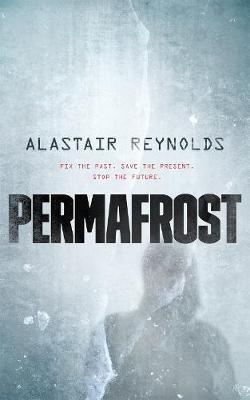 I haven’t read any Alastair Reynolds books previously, although I am very familiar with his books. I have wanted to read Redemption Ark forever. If you are looking for sincere and hard science fiction, he is your man from what I hear. In Permafrost, Reynolds utilizes the much-overused time-travel trope. It would take an excellent writer with a fresh perspective to bring anything new to the time travel type novel. He does it here. Instead of being hackneyed, this story comes off fresh and exciting. I liked how he explained time as a stream; someone who travels the flow goes backward and forwards like swimming in a river. Where you are in a stream is always relative to other points. It is an excellent way to explain a difficult concept without a Deus ex Machina explanation.
I haven’t read any Alastair Reynolds books previously, although I am very familiar with his books. I have wanted to read Redemption Ark forever. If you are looking for sincere and hard science fiction, he is your man from what I hear. In Permafrost, Reynolds utilizes the much-overused time-travel trope. It would take an excellent writer with a fresh perspective to bring anything new to the time travel type novel. He does it here. Instead of being hackneyed, this story comes off fresh and exciting. I liked how he explained time as a stream; someone who travels the flow goes backward and forwards like swimming in a river. Where you are in a stream is always relative to other points. It is an excellent way to explain a difficult concept without a Deus ex Machina explanation.
In some ways, the story is a scary premise. The future, 2080, has been destroyed by a malignant virus type thing that systematically destroys all the insectile species on the planet. Insects are a keystone, so soon, other animal and plant systems start to collapse, and finally, the whole pyramid, with humans at the top, crumbles like Jenga. The WHO(World Health Organization) is the only government type organization still in existence. They have a shot of saving the future by going into the past. Now, this is a shortish story. There is not a lot of time for explanation. So it is bare-bones, and much of the time, Reynolds only gives the reader the barest glimpse of the history and backstory. Sometimes it is like trying to see things through a blizzard. It is just enough to provide a springboard for the imagination of the reader to take hold. Valentina Lidova, the main protagonist of the story, is a 71yr old daughter of the inventor of the science of time travel. It is her consciousness, along with a few others, which are sent back through the past to save the future. Protecting the future is not what you think it will be. It is a twisty story that grabs your heart, intelligence, and emotions and ties them in knots. Although that doesn’t sound fun, it is.
This is an incredibly exciting novel and worth the time it takes to deep dive into this brilliant environmental dying Earth story.
Review originally published on BeforeWeGoBlog.
Read Permafrost by Alastair Reynolds
The post REVIEW: Permafrost by Alastair Reynolds appeared first on Grimdark Magazine.
December 5, 2020
REVIEW: Radio by J Rushing
Radio by J Rushing is an interesting two-headed beast of a book.
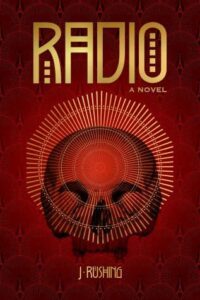 On one hand, it feels in a lot of ways like a standard urban fantasy. Our protagonist is a Broadcaster named Marduk who used to be worshipped as a god. As the book goes on, there are descriptions of exactly what Broadcasters can and cannot do. They have some control over other’s minds, and they can leap between human bodies, and survive through possessing them.
On one hand, it feels in a lot of ways like a standard urban fantasy. Our protagonist is a Broadcaster named Marduk who used to be worshipped as a god. As the book goes on, there are descriptions of exactly what Broadcasters can and cannot do. They have some control over other’s minds, and they can leap between human bodies, and survive through possessing them.
To be clear, though the book has Artemis, Apollo, Marduk, Lilith, and other mythical or divine names, outside of their names none of them have any real connection with their counterparts. Apollo has no control over the sun. Marduk has nothing to do with Babylon save that he used to be worshipped there.
In 1928 Paris, Marduk has invented a radio, but he wants to be cautious with its use. It should work, he believes, to improve the other Broadcaster’s lives, but Apollo and Artemis in particular want to use it to dominate regular humans. Marduk believes such a use of his Radio would break apart the Mentium—the coalition of Broadcasters—for good, and alert all regular mortals to their existence.
Marduk gets betrayed early on because he won’t agree to help the others. Nearly dead, he uses his powers to leap into a new body, but he doesn’t have time to pick who it is, and he ends up in an opium-addicted jazz musician named Del.
When it deals with the intrigues of the Broadcasters, this book feels fairly standard for a lot of urban fantasy. It’s very well-executed urban fantasy, but the intrigues of secret cabals of powerful beings is the bread and butter of that particular subgenre.
But I’ve never seen it done in 1928 Paris, and for me, that’s where the book sang.
The more the book leaned into the setting, the stronger it became. Early on it felt like the Broadcaster wars could be happening at any point in time and it just happened to be 1928 Paris. Paris was exquisitely described (and indeed, the author lived there) but it felt arbitrary.
The longer the book went on, the more the setting and the plot merged until it felt as if there was no other place or time this book could have taken place in.
The opium-addicted angle early on felt as if it would be simply ignored. Marduk had the willpower of a god and could simply refuse Del’s yearnings. I was wrong on that—it went through the specifics of the addiction, and all the symptoms of both using and withdrawal.
Marduk himself is a hard protagonist to like. He’s focused on the big picture at the cost of individuals. He has little concern for Del’s life save that he’s trapped in it as well. The counterpoint to this is Bernard, Del’s roommate, and the two play off each other well. Bernard wants Del back and he’ll do what he must to help Marduk to that end. Yet as Marduk concedes his own limitations, including to the opium addiction, he becomes more approachable even if he never truly softens.
I really enjoyed Radio, and I’d recommend it to anyone looking for something a little out of the ordinary.
Read Radio by J Rushing
The post REVIEW: Radio by J Rushing appeared first on Grimdark Magazine.
December 4, 2020
ANNOUNCEMENT: Winner of the Matthew Ward Pay it Forward Competition
A few months back, we announced the Matthew Ward Pay it Forward Competition because Ward–being an utter legend–refused payment for a story we acquired from him and asked that I pay it forward to an unpublished author.
So, without further ado, the winner of the Matthew Ward Pay it Forward Competition is … drumroll …
Winner of the Matthew Ward Pay it Forward Competition
Hûw Steer with his brilliant short story about a plague doctor, The Only Cure. Hûw’s story was a stand out from the pack and I cannot wait to show it to you in Grimdark Magazine #25 to be released on the 15th of January.
Runners up
In addition, the two runners up, in order of glory are Zachary Fritz for his short story Morality Aside and Jack Van Beynan for The Dead Man.
Turning the top twelve longlisted stories into just three winners was incredibly difficult. Once we had whittled down the entries to this point, I was actually left with a decent volume of really brilliant stories–more so than I can remember from any previous open window we’ve had.
Fortunately I had a bunch of experienced hands in our review team willing to put their hands up and give me some fresh and opinions sets of eyes on these stories.
Based on our discussions on both of these stories, I’ll be making publishing offers for 2021 to both of these authors as well.
A thank you to Matthew Ward
A huge thank you needs to go out to Matthew Ward for this competition. The competition was 100% his idea, and shows the kind of selflessness that makes me love being a small part of this industry. We’ve been publishing short stories by Matt for I think five years now, and I consider myself fortunate to be amongst the venues he trusts to put out his fiction.
If you have a moment, head on over and check out more about his current Legacy series beginning with Legacy of Ash in 2019, continuing with Legacy of Steel in 2020, and concluding with Legacy of Light in 2021.
The post ANNOUNCEMENT: Winner of the Matthew Ward Pay it Forward Competition appeared first on Grimdark Magazine.
December 3, 2020
5 brilliant Polish SFF book covers
I was sitting down in a Sydney pub with Jeremy Szal (author of the brilliant Stormblood and the upcoming Blindspace) when the topic of book covers came up. We’d been discussing my completion of the Red Rising trilogy when Jeremy put down his pint, held up a finger, and then fished his phone from his pocket while telling me that I had to check out the Polish version of the covers for the series.
And oh my, were they gorgeous. Created by Dark Crayon, the covers were brilliant studies on using a more minimalist approach to colour palette than I feel we generally see in countries like Australia, the UK, and the US, while also ensuring a bold cover that pops off the catalogue page. The character designs were also brilliant, as was the use of nicely textured backgrounds that look simple from afar, but are generally worth zooming in on to see what’s there.
This made me ask the obvious next question, and Jeremy fished out a bunch of other covers from Polish SFF publishers that he loved, and I immediately fell in love with. Naturally, I needed to share these with you.
Caliban’s War by James S.A. Corey
As I said above, this cover just blew me away. Based on the covers I’ve picked below, I think it’s safe to say the red, white, and greyscale seems to be a sweet spot for my tastes. I love not just the character design (which is just epic), but also the way the artist has either created or used a pre-existing lunar or planetary landscape under a red wash to add detail to what may have otherwise been a flat colour.
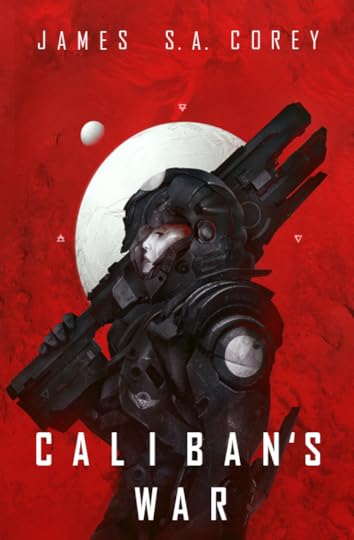
Neuromancer by William Gibson
Just brilliantly screams cyberpunk using greyscale and red only. The character is wonderfully constructed with excellent movement across the image giving a pure badarse feeling to the character.
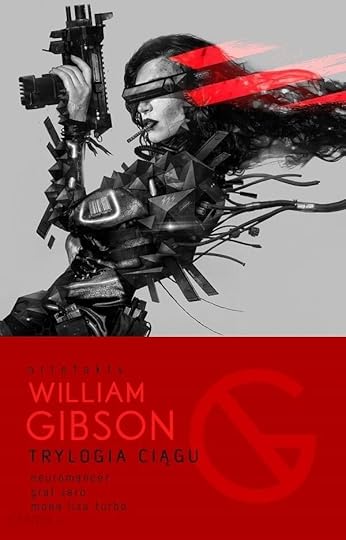
Fool’s Quest by Robin Hobb
I love this dark and brooding cover by Dominik Broniek in that it makes me think of the online MMPORGs and video games from when I was younger. That highly detailed fore and middle ground with the blended colour scheme in the back which doesn’t stray from the central colour palette is just brilliant.

Way of Kings by Brandon Sanderson
The detail in the armour of the central character here borders on the ridiculous. You could zoom in on it for fifteen minutes and probably still not be able to appreciate the sheer level of effort the artist has gone to putting that suit of armour together.
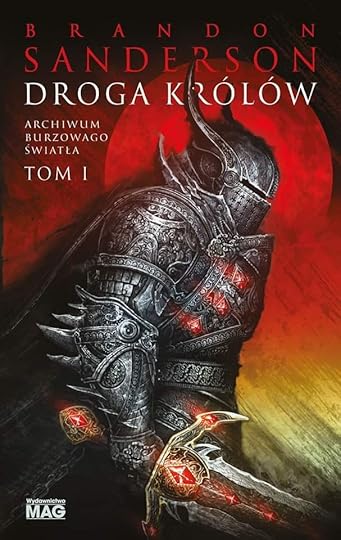
Red Sister by Mark Lawrence
A little more comic book in style than I personally usually enjoy, but the typography layout alongside Nona and the way she exudes a (refreshingly) non-sexualised danger hits the mark for me. The accentuation of that danger through her casually crossed feet above the head of a steel-garbed fallen foe just makes this pop.
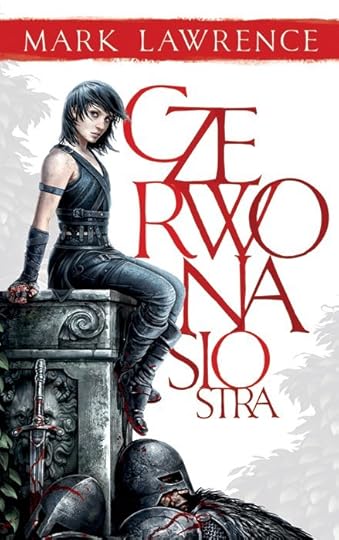
Based on my chat with Jeremy, I’ve certainly become a fan of a few Polish publishers and their efforts to turn already excellent books into something that will pop off the catalogue page in their local markets. if you know of any others gorgeous Polish covers that have escaped my article, please post them in the comments!
The post 5 brilliant Polish SFF book covers appeared first on Grimdark Magazine.
December 2, 2020
REVIEW: Gwendy’s Button Box by Stephen King
Did you know that sometimes Stephen King is not scary? Not all stories need terror, sometimes existential dread will do the trick. If you are scared of the future and where you fit into the grand scheme of the world, then Gwendy’s Button Box is the story for you.
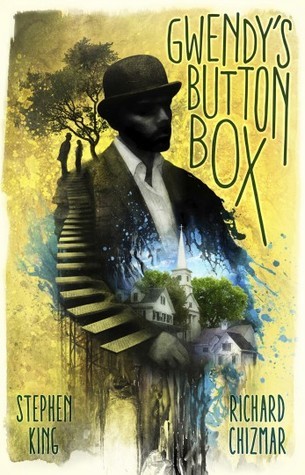 In my quest to read all the King novels, including his more obscure stuff, I came across this little gem. It stars Gwendy, as in a mash-up of Gwendolin and Wendy, as a typical young girl in the 1970s. The first scene if of Gwendy doing laps on a dangerous set of steps called the Suicide Steps. One of her classmates called her fat, and this has caused an intense need to exercise and lose any pudge that the 11-year-old might be holding on to. The theme of self-acceptance comes up often as a significant theme throughout the story. Gwendy needs everyone to accept her, and the button box offers a way for her to be above reproach. Gwendy encounters a weird man in a black top hat on her way to leave the Suicide Steps. Again, strange people in top hats are a common occurrence in Stephen King’s books. Still, I have no idea why top hats are a trigger point for the bizarre in King’s worlds, but there you go. The enigmatic man offers Gwendy a choice, take the mysterious black box with buttons, a box that Gwendy feels to the marrow of her bones that belongs to her, or don’t. Of course, Wendy accepts the responsibility of the box. And it is a responsibility because as the story progresses, we come to understand the innate power that the box has over the universe. Triggers and switches on the box can crush whole continents, buttons, and levers can make any desire that Gwendy has come true. Gwendy is not just some girl; she was, in a way, selected to protect the box for several years. In exchange for her acceptance and protection of the power of the box, Gwendy gets perks. She is gorgeous and healthy. Everything that she strives to do is effortless.
In my quest to read all the King novels, including his more obscure stuff, I came across this little gem. It stars Gwendy, as in a mash-up of Gwendolin and Wendy, as a typical young girl in the 1970s. The first scene if of Gwendy doing laps on a dangerous set of steps called the Suicide Steps. One of her classmates called her fat, and this has caused an intense need to exercise and lose any pudge that the 11-year-old might be holding on to. The theme of self-acceptance comes up often as a significant theme throughout the story. Gwendy needs everyone to accept her, and the button box offers a way for her to be above reproach. Gwendy encounters a weird man in a black top hat on her way to leave the Suicide Steps. Again, strange people in top hats are a common occurrence in Stephen King’s books. Still, I have no idea why top hats are a trigger point for the bizarre in King’s worlds, but there you go. The enigmatic man offers Gwendy a choice, take the mysterious black box with buttons, a box that Gwendy feels to the marrow of her bones that belongs to her, or don’t. Of course, Wendy accepts the responsibility of the box. And it is a responsibility because as the story progresses, we come to understand the innate power that the box has over the universe. Triggers and switches on the box can crush whole continents, buttons, and levers can make any desire that Gwendy has come true. Gwendy is not just some girl; she was, in a way, selected to protect the box for several years. In exchange for her acceptance and protection of the power of the box, Gwendy gets perks. She is gorgeous and healthy. Everything that she strives to do is effortless.
With an effortless existence comes a bit of ennui. What if she pulled a lever? Why does any of this matter at all? Coupled with typical teenageness, Gwendy has a difficult time controlling her impulses. That is the crux of the story more than the black button box. Given infinite power, what should Gwendy do? How does one weigh morals against exercising her power?
Gwendy is haunted by her ability to do destruction.
Gwendy’s Button Box a good Stephen King story. Instead of gross-out scares, we have the haunting of the mind and soul, which is think is way more interested than just being scared or disgusted. King does this kind of dread well; you see it a lot in his novels. It makes me think of the existential dread many of the characters in The Stand face.
I loved this story, more so than some of the recent Stephen king shorts and novellas I have been reading. Elevation I am looking at you; you are lame-sauce.
If you are looking for dread laced in your horror like strychnine on a cookie, this story is for you. And, at just under 30k words, it isn’t huge.
Give Gwendy’s Button Box a try.
Originally published on BeforeWeGoBlog.
Read Gwendy’s Button Box by Stephen King
The post REVIEW: Gwendy’s Button Box by Stephen King appeared first on Grimdark Magazine.



